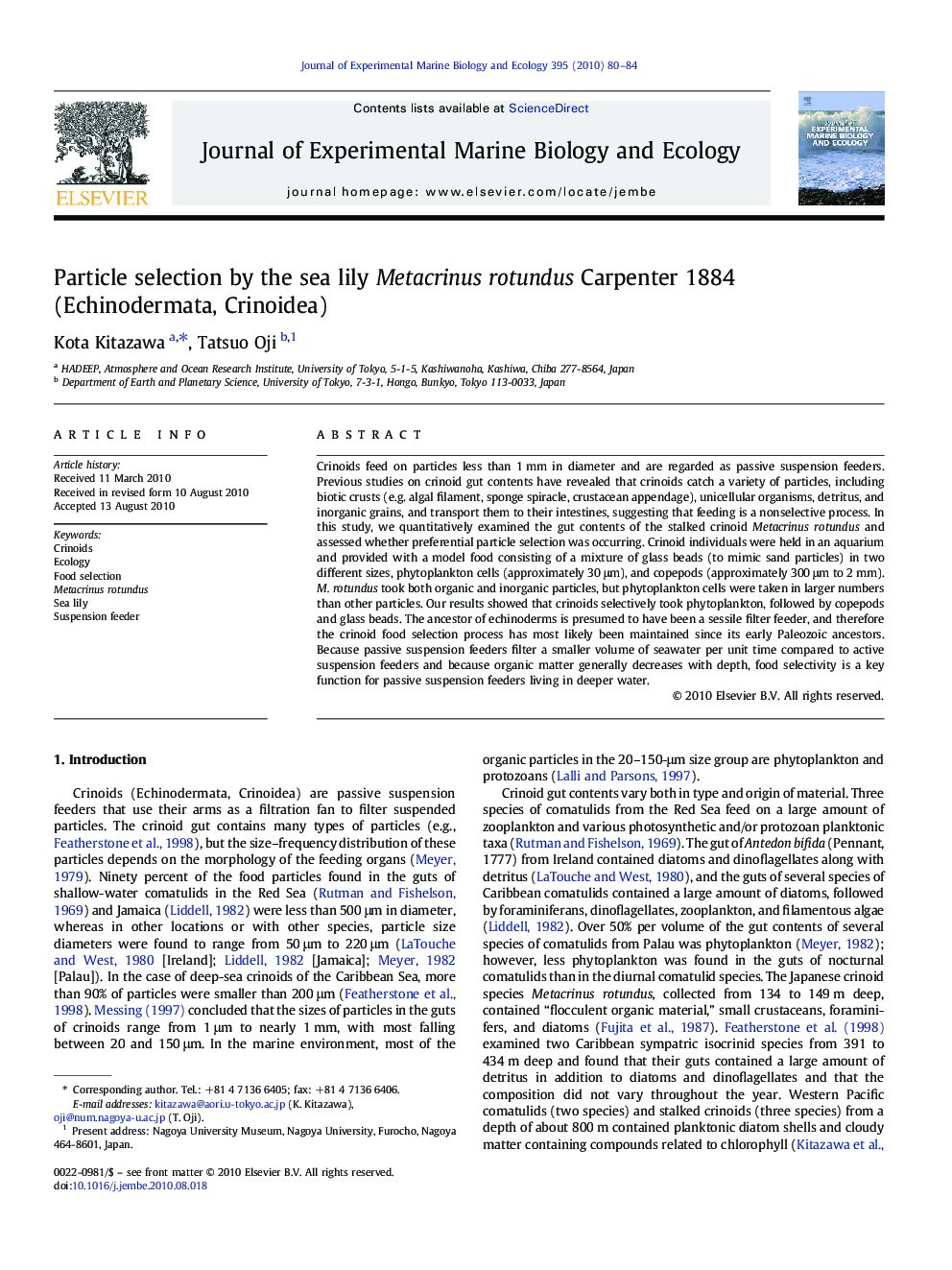| کد مقاله | کد نشریه | سال انتشار | مقاله انگلیسی | نسخه تمام متن |
|---|---|---|---|---|
| 4396503 | 1618465 | 2010 | 5 صفحه PDF | دانلود رایگان |
عنوان انگلیسی مقاله ISI
Particle selection by the sea lily Metacrinus rotundus Carpenter 1884 (Echinodermata, Crinoidea)
دانلود مقاله + سفارش ترجمه
دانلود مقاله ISI انگلیسی
رایگان برای ایرانیان
کلمات کلیدی
موضوعات مرتبط
علوم زیستی و بیوفناوری
علوم کشاورزی و بیولوژیک
علوم آبزیان
پیش نمایش صفحه اول مقاله

چکیده انگلیسی
Crinoids feed on particles less than 1 mm in diameter and are regarded as passive suspension feeders. Previous studies on crinoid gut contents have revealed that crinoids catch a variety of particles, including biotic crusts (e.g. algal filament, sponge spiracle, crustacean appendage), unicellular organisms, detritus, and inorganic grains, and transport them to their intestines, suggesting that feeding is a nonselective process. In this study, we quantitatively examined the gut contents of the stalked crinoid Metacrinus rotundus and assessed whether preferential particle selection was occurring. Crinoid individuals were held in an aquarium and provided with a model food consisting of a mixture of glass beads (to mimic sand particles) in two different sizes, phytoplankton cells (approximately 30 μm), and copepods (approximately 300 μm to 2 mm). M. rotundus took both organic and inorganic particles, but phytoplankton cells were taken in larger numbers than other particles. Our results showed that crinoids selectively took phytoplankton, followed by copepods and glass beads. The ancestor of echinoderms is presumed to have been a sessile filter feeder, and therefore the crinoid food selection process has most likely been maintained since its early Paleozoic ancestors. Because passive suspension feeders filter a smaller volume of seawater per unit time compared to active suspension feeders and because organic matter generally decreases with depth, food selectivity is a key function for passive suspension feeders living in deeper water.
ناشر
Database: Elsevier - ScienceDirect (ساینس دایرکت)
Journal: Journal of Experimental Marine Biology and Ecology - Volume 395, Issues 1â2, 15 November 2010, Pages 80-84
Journal: Journal of Experimental Marine Biology and Ecology - Volume 395, Issues 1â2, 15 November 2010, Pages 80-84
نویسندگان
Kota Kitazawa, Tatsuo Oji,